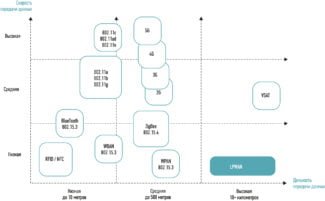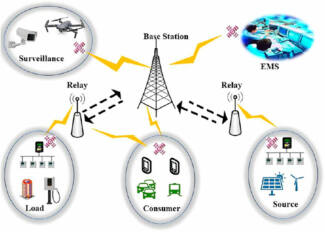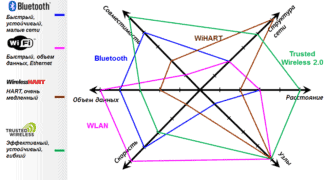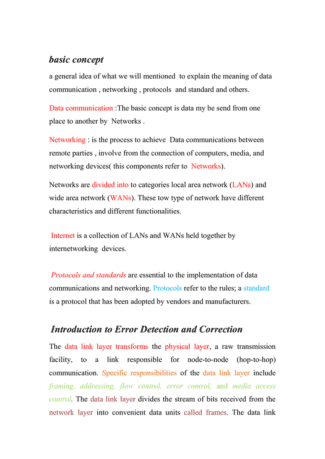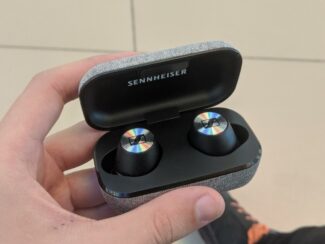LPWAN allows not only to save on equipment cost, but also to reduce the cost of commissioning. The process of launching complete systems on LPWAN is made through the connection of "smart" devices on a Plug-and-Play principle. For example, water meters are installed the same way as conventional water meters, and immediately begin transmitting readings into the LPWAN network. In addition, any plumber can install such a device, unlike traditional solutions, ZigBee or GPRS, where you need to configure and calibrate the professional.

- LPWAN and other wireless technologies
- LPWAN-radio channel capacity
- What is it for?
- Examples of use
- Fixed point-to-point connection
- Fixed point-to-multipoint connection
- Vehicles and other mobile objects
- Wireless signals.
- Modulation.
- History of wireless communication
- Wi-Fi Wireless Data Transmission Standard
- What are the problems
- Outlook for Wireless Networks
- Millimeter-Wave Networks
- Backscatter networks
LPWAN and other wireless technologies
In the concepts of IoT and M2M, remote communication between devices is based on the exchange of small packets of data, and existing wireless technologies are not always able to effectively provide such exchange. LPWAN technology was specifically designed to provide a simple, reliable, and low-cost method of communication for sensors spread over a large area, covering the needs of applications that are not demanding in terms of data transmission speed.
LPWAN (Low-power Wide-area Network) is a new type of wireless networks designed to transmit telemetry data from various devices, sensors, transmitters and metering devices over long distances. The emergence of LPWANs is mainly due to the needs of machine-to-machine (M2M) communication and data transmission under the concept of the Internet of Things (IoT).
The use of wireless technology in a particular area is determined by two key parameters – communication range and data transfer rate (Fig. 1). For example, Wi-Fi, having a high bandwidth of several Mbit / s and a range limitation of 100-200 meters, is most often used to build wireless local area networks within the office, apartment or house.
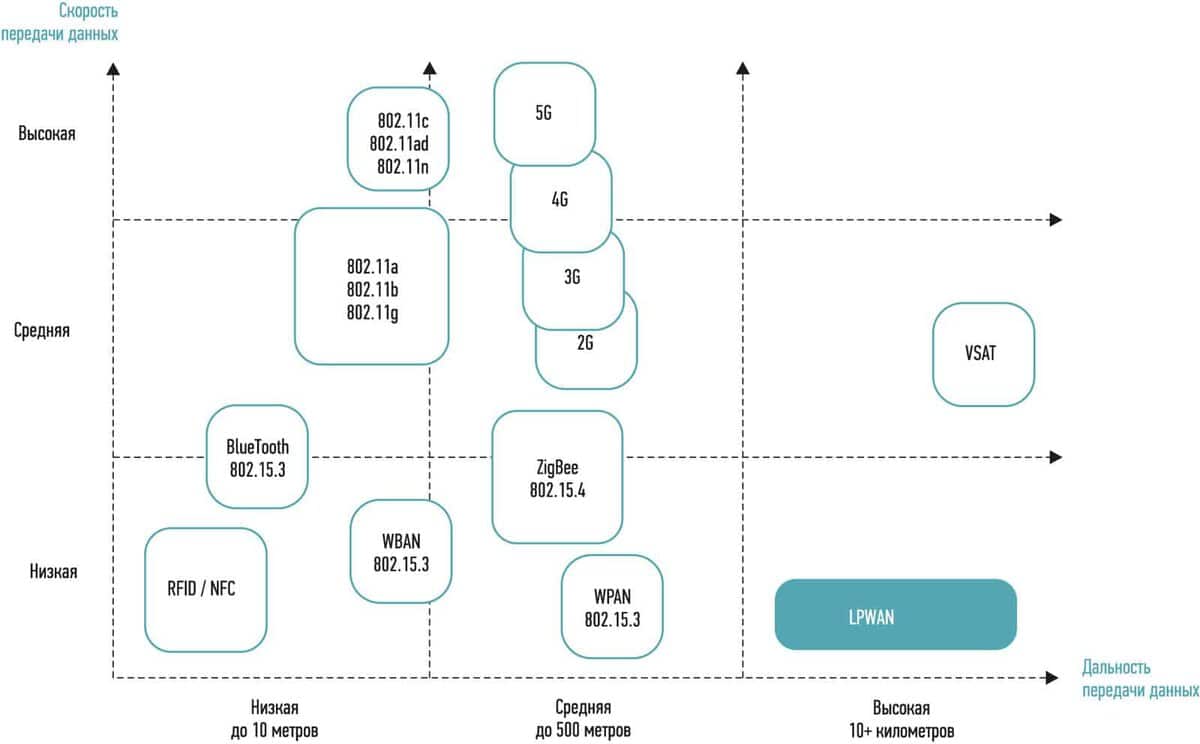
Fig. 1. Comparison of wireless technologies in terms of range and data transfer rate
As follows from the name of the technology, its main characteristics are low power consumption (low-power) and wide-area coverage (wide-area). At the same time features of data transmission in M2M and IoT impose a number of additional requirements for telemetry networks class LPWAN.
- radio transmission range;
- energy efficiency, autonomy;
- data transmission speed;
- radio signal penetration;
- signal transmission delay;
- the number of base stations required to cover a particular area;
- base station performance;
- subscriber fee, connection costs;
- cost of components.
LPWAN-radio channel capacity
Inter-machine communication is based on the principle of exchanging small data packets. For example, a smoke detector needs to transmit an alarm when smoke is detected and the result of the daily self-diagnostics to the dispatcher – one bit of information. The same is the case with sensors in water leakage control systems. Readings from water, electricity, heat, gas meters, as well as humidity or temperature sensors can be "packed" into several bits.
The data transfer rate of LPWAN-radio channel depends on the specific task at hand and usually ranges from a few bits to several hundred bits per second. There is no need for high bandwidth. This, in turn, opens up a number of opportunities to improve other, equally important network parameters.
What is it for?
The Cisco Ultra-Reliable Wireless Backhaul solution grew out of products from Cisco's acquisition of FluidMesh. It is designed to provide high-speed wireless data transmission over long distances at stationary and moving objects.
Although the word Wireless is in the name, it's important not to confuse it with familiar Wi-Fi. In Wi-Fi networks, we have access points and standardized client devices – laptops, smartphones, tablets. Sometimes, instead of a client device, another access point is connected – you get a Wi-Fi bridge, bridges can make a Mesh-network, but this is not exactly what Wi-Fi is invented for and not where it works best.
In the case of the Ultra-Reliable Wireless Backhaul, we have no client devices. There are only devices that can receive and transmit data using special proprietary technology. In order to connect a client device, you must use an Ethernet switch and/or Wi-Fi access point, connecting them to the Ultra-Reliable Wireless Backhaul device with a cable.

The easiest thing to imagine is that we need to connect some locations with a high-speed cable, but it is expensive, difficult or, in the case of moving objects, impossible to pull it. So we put transceivers and make this "cable" wireless. So we create a backbone network – Wireless Backhaul in English terminology.
Examples of use
Fixed point-to-point connection
The simplest example is still the same: you need to connect a new building in, say, a factory area to the general network, and it is expensive and long to lay optics there. The bridge, built on Cisco equipment, will quickly and cheaply provide a connection up to 500Mbit/s. If necessary, you can put two pairs of devices and get 1Gbit/s.
In the same way, the problem of connecting construction sites to the network is solved. There is usually no point in extending optical lines here, also because they are likely to be torn.
Fixed point-to-multipoint connection
A good example here is connecting surveillance cameras in the area around the main building – office of the plant, shopping mall, etc. Cameras are most often installed on lampposts where power is already connected for the sake of the lampposts themselves, but there is a question with the Ethernet cable connection. To avoid this – you can put together with the cameras a simple device Ultra-Reliable Wireless Backhaul and from each pole to transmit data to the device installed on the building.

Vehicles and other mobile objects
Features of Cisco Unified Wireless Backhaul technology, which will be discussed below, can provide a very high quality of communication with mobile objects.
– In open pit mining operations, it is used to organize communication to collect telemetry and location data from the quarry equipment. Fixed Cisco Unified Wireless Backhaul devices with antennas pointing inside the pit are installed along the perimeter, and mobile devices with omni-directional antennas are installed on the machinery. There is even enough bandwidth to transmit video from the cameras mounted on the machines.

Wireless signals.
When considering a signal that is used to transmit information in data format, you need to have an understanding of the following things:
– How fast is the information transmitted , i.e., how fast can the data rate be achieved?
– how far away can data be transmitted , i.e. how far away can wireless LAN (WLAN) devices be from each other while maintaining maximum data transfer rates?
– How much data can be transferred , i.e. how many users can exist on such a network without slowing down the data rate? All of the above parameters determine the ability to receive a good signal at the maximum possible distance. To increase the amount of data transmitted per unit time it is necessary to use a wider spectrum band or differential methods of data transmission using radio frequency signals. As shown in Figure 3.39, the following factors influence the efficiency of data transmission when using radio frequencies:
– The type of signal modulation used . Sophisticated modulation methods achieve greater throughput ;
– distance . The greater the distance between transmitter and receiver, the weaker the signal will be received at the receiver;
– noise level . Electronic interference and physical barriers negatively affect the quality of the RF signal.
In wireless channels, information transmission is based on the propagation of radio waves. The table provides information about the ranges of electromagnetic oscillations used in wireless and optical communication channels.
| Range | Wavelengths, m | Frequencies, GHz | Application |
| Decimeter | 1..0,1 | 0,3..3 | Cellular radiotelephones, TV, Satellite, RK to LAN* |
| Centimeter | 0,1..0,01 | 3..30 | Radio relay links, fiber optic links, satellite links |
| Millimeter | 0,01..0,001 | 30..300 | The RC on LAN |
| Infrared | 0,001..7,5*10-7 | 3*102..4*105 | FOCL, WDM** |
| Visible light | (7,5. 4,0)*10-7 | (4,0. 7,5)*105 |
Modulation.
The process of modulation is to change the amplitude, frequency, or phase of a radio frequency or light signal, depending on the data being transmitted. The characteristics of the carrier wave change almost instantaneously depending on the form of the modulating signal. With the help of modulation information about the data signal (text, voice, etc.) is introduced into the carrier frequency for further transmission over a wireless network.
▪ Amplitude modulation (AM) involves modulating the amplitude (signal height) of the carrier wave depending on the data signal.
▪ Frequency modulation (FM) uses modulation of the carrier wave frequency.
▪ Phase modulation (PM) modulates the polarity (phase) of the carrier wave.

Influence of distance on signal quality.
The greater the distance between the receiver and transmitter, the weaker the carrier signal becomes and the smaller the difference between the useful signal and the noise. Eventually the signal will be impossible to distinguish from the noise. At this extreme distance there is a loss of communication between the devices. The signal-to-noise ratio required for signal recovery is determined by the type of modulation used. As the bandwidth of wireless networks increases, more complex signal modulation schemes are used, while reducing the immunity of the signal to interference and therefore reducing the maximum distance over which data can be transmitted.
The impact of interference on signal quality.
Electronic interference and physical obstacles negatively affect the quality of the radio frequency signal. It is impossible to guarantee the proper operation of devices for wireless networks without on-site measurements of the parameters of the received signal. For example, walls with embedded metal structures noticeably limit the maximum distance for data transmission.
To get a sufficiently clean useful signal in the receiver, the carrier signal must have a high signal-to-noise ratio (high signal level and low noise level). If there is noise or interference in the data channel, the communication speed will decrease. Interference, communication speed, and maximum distance are interrelated.
History of wireless communication
It is well known that A.S. Popov was the inventor of the radio, but at that time information data were sent by radio in the form of telegraphic signals. Then came the communication system based on radio telephones. Then it became possible to use radio waves to transmit images, and television broadcasting emerged. Further progress in the field of telecommunications has led to the development of wireless network technologies, which are divided into the following types, which differ in the range of radio signal transmitters:
- PAN (Personal Area Network, which means personal networks). This is a network with a small coverage area (about ten meters).
- WLAN (Wireless Local Area Network, which means wireless local area network).The coverage range is about a hundred meters.
- WWAN (wide area wireless networks). This network uses wireless communication, which provides Internet access to mobile users.
- Technological methodology of Wi-Fi (Wireless fidelity, that is, wireless communication). Today such technologies of network organization are the most demanded at high requests for mobility, convenient implementation and use. This standard appeared in the ninety-seventh year of the twentieth century and is considered the standard for broadband wireless communication, which has a series of 802.11. Typically, Wi-Fi devices are used to organize wireless local computer networks, and in addition, to form a separate node for access to the Internet at high speed.
Wi-Fi Wireless Data Transmission Standard
As noted earlier, Wi-Fi technology refers to one of the ways in which information is transmitted through radio communication. This technology is now the most widespread in the world's leading powers and is rapidly developing in the Russian Federation. It allows users to connect to Internet networks without any wired connections. Wi-Fi technology was invented in Holland by NCR Corporation/AT&T. Originally such a system was designed for use in cash register systems and was introduced as WaveLAN. It was able to support information exchange at a speed of about two Mbit/sec. In the end of 2009, the IEEE 802.11n standard was approved, which allowed increasing the speed of information exchange in Wi-Fi network up to four times, when compared to equipment using the 802.11g standard. Theoretically, the 802.11n standard makes it possible to achieve information transfer rates of about six hundred Mbit/sec.
The use of this technology allowed all users of computer devices to appreciate the advantages of mobile Internet at home, at work or in public places, because at the same time they had the opportunity to move around. All owners of mobile computer devices that have a built-in Wi-Fi module can connect to the Internet at sufficiently high speeds of information exchange.
As noted earlier, Wi-Fi technology is based on the use of radio waves. Radio waves are electromagnetic oscillations propagating at speeds close to the speed of light. Their main parameters are the pulse frequency, wavelength and power of radiation. The full frequency range used for radio communication is divided into a set of frequency bands located in the range from about thirty Hertz to three thousand Gigahertz. Wireless Wi-Fi networks, according to a set of standards 802.11b,g,n, can use a frequency range of 2400 to 2483.5 MHz. That is, the centimeter frequency range.
What are the problems
In addition to limited connectivity by area, wireless Internet networks can malfunction and have difficulties of various kinds:

- Failure of the router settings: from the need to clarify the information on the device and change the channel, the frequency of operation to the breakdown of the chip.
- Lack of drivers on the computer, the need to update the software, system errors, incompatibility of devices, etc.
- Problems on the line. It's necessary to contact the customer support service: the problems can be temporary or more serious and are related to the failure of the equipment.
Despite the existence of WPA client protection protocols, in many cases the devices that work with WEP are used. Thus, vulnerable hotspots are formed. Therefore, the confidentiality of transmitted information within the wireless network cannot be guaranteed 100% and personal information can still fall into the hands of fraudsters.
Important information! Some researchers claim that the permanent use of wireless technology can have negative effects on health. However, no basic research has been done.
Outlook for Wireless Networks
The IEEE 802.11 wireless standard was created in 1997. Nowadays it is possible to get high speed connection to a line practically in any region of the planet. The quantitative growth of wireless points was promoted by the appearance on the market of the Centrino platform from Intel. Thanks to this utility many laptops are now equipped with Wi-Fi controllers.
In the near future is planned a mass transition to the technology and standard IEEE 802.16a, which can provide networks WiMAX. It is assumed that the frequency band 2-11 GHz will be used, the speed of information transfer will be supported in the range of 70 Mbit / s and the coverage area will increase to 50 km.
WiMAX devices have already begun to produce some organizations, in particular, Intel. Broadband networks are also in development at Telecom, BT, Millicom, the Russian operators Peterstar, MediaNet, Comstar.

- Improving the quality of communication, expanding functions.
- Internet access from anywhere in the world.
- Increased speed of connection to the network.
- Quantitative growth of users due to increased availability of equipment.
- Spreading of the possibility of remote control of electronic devices.
Local wireless technologies are spreading more and more. Both offices, business centers and residential houses use them. At the moment, Wi-Fi has a number of disadvantages. However, the means of communication are rapidly developing, and the quality is increasing. In the coming years, we can expect to overcome existing shortcomings, increase capabilities, and provide high customer security.
Millimeter-Wave Networks
Millimeter-wave wireless technologies involve the use of frequencies in the 30 GHz to 300 GHz range – with wavelengths from 10 mm to 1 mm, respectively. In the terminology of the International Telecommunication Union (ITU) the range is called "Extremely high frequency" (EHF).
Today the EHF band is not used much, but there are high expectations for it to transmit significant amounts of data over short distances. In particular, the IEEE 802.11ad standard (the commercial name for networks is WiGig), authorized by the Ministry of Communications for use in Russia in May 2015, involves data exchange in line-of-sight at distances of up to 10 meters in the 60 GHz range at speeds of up to 7 Gb/s.
Millimeter-wave wireless technologies will grow in popularity as the demand for short-range, high-bandwidth data communications systems, such as for streaming 8K quality video, grows.
Backscatter networks
Wi-Fi backscatter is a very low-power wireless networking technology that relies on the principle of using the RF signals (specifically Wi-Fi) as a power source, and then reusing the existing Wi-Fi infrastructure to connect to the Internet. In other words, backscatter devices use Wi-Fi power for power and the Wi-Fi network itself for transmitting their own data through it.
According to Gartner analysts, the autonomy and compact size of such devices makes them ideal in areas already saturated with wireless signals. Backscatter devices can become the basis for relatively simple Internet of Things solutions – such as sensors and sensors in smart homes and offices.
Read More:
